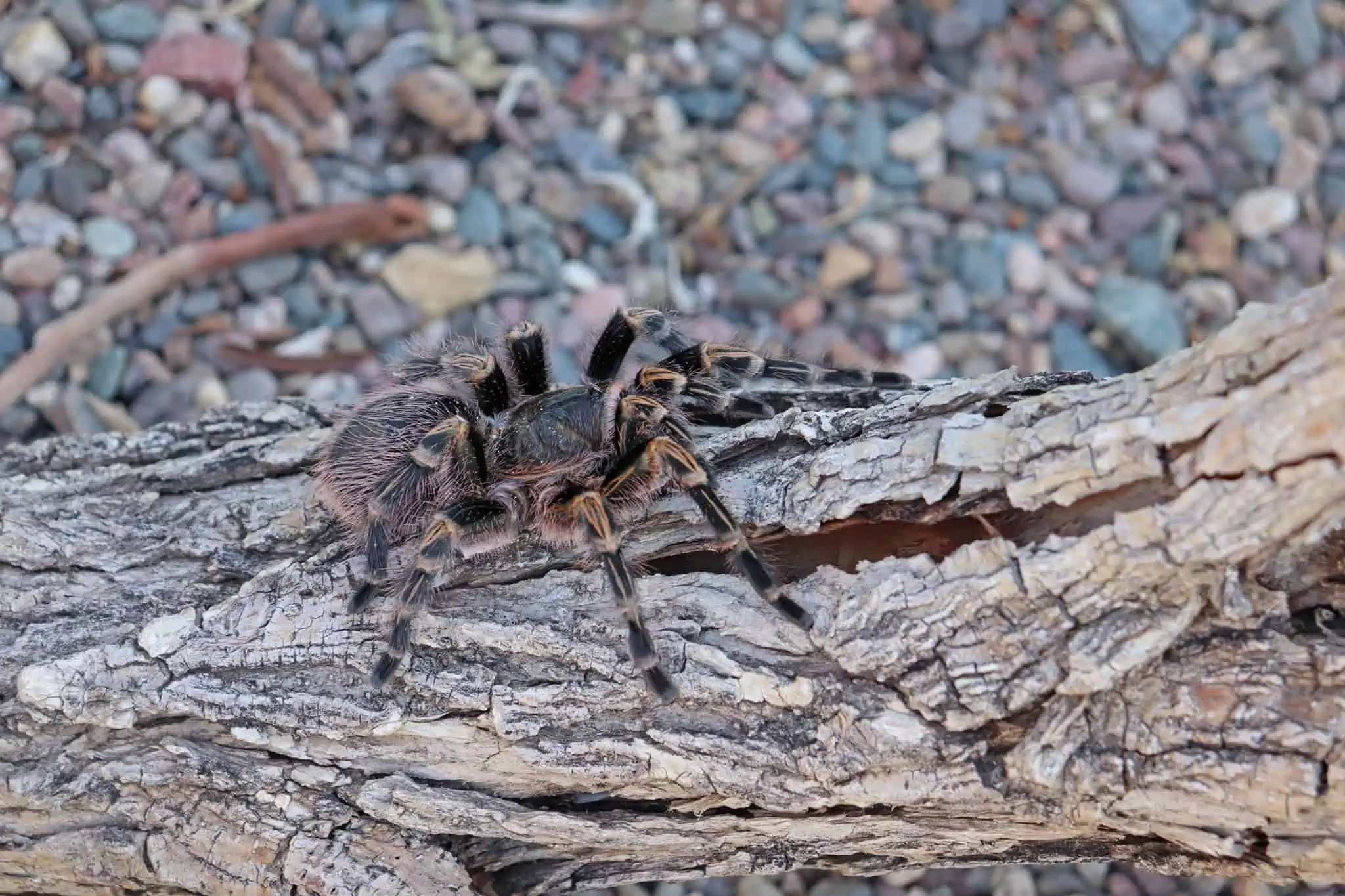Tarantula
THERAPHOSIDAE SPP.
Tarantula Basics
There are currently about 800 described species of tarantula around the world, ranging in size from 3 to 12 inches across. Most species burrow underground; but some reside in trees, spinning tunnel-shaped homes out of silk. Male tarantulas are short-lived; most live less than 10 years. Female tarantulas can live up to 30 years, depending on the species.
Hairy Spiders
The legs and abdomens of tarantulas in the Americas are covered with barbed bristles known as urticating hairs. Tarantulas can kick or rub these hairs off to mark territory or deter predators. Unlike true hair found on mammals, urticating hairs do not grow back. Instead, a tarantula gains new urticating hairs with each molt. For predators and some humans, urticating hairs can act as a deterrent, causing itching or a rash on the skin, or damage to the nose and lungs if inhaled.
Dancing Spiders
The name tarantula derives from a rapid whirling dance, called the tarantella, that originated in the southern Italian seaport of Taranto. During the 15th and 16th centuries, bites from a large local spider were thought to cause “tarantism,” an illness where the patient danced the tarantella until he or she dropped from exhaustion. There is no scientific evidence to suggest that a bite from a tarantula spider would cause dancing, but it may cause site swelling and pain. Tarantulas have a mild venom, and there are no verified cases of a human fatality from a tarantula bite.
Tarantula Species at the Phoenix Zoo
- Gooty Sapphire (Poecilotheria metallica) – CRITICALLY ENDANGERED
- Mexican fireleg tarantula (Brachypelma boehmei) – ENDANGERED
- Arizona blonde (Aphonopelma chalcodes)
- Curlyhair (Tiltocatl albopilosus)
- Guyana pinktoe tarantula (Avicularia avicularia)
- Greenbottle blue tarantula (Chromatopelma cyaneopubescens)
- Brazilian Salmon Pink bird-eating tarantula (Lasiodora parahybana)
- Brazilian black tarantula (Grammostola pulchra) – NOT ON VIEW
- Pink Bloom Tarantula (Pamphobeteus platyomma) – NOT ON VIEW

Diet: invertebrates, small animals
Zoo Diet: invertebrates
Habitat: forests, grasslands, deserts
Weight: 1 – 6 oz


Plan your visit today!
The Phoenix Zoo is one of the largest non-profit zoos in the U.S., caring for over 3,000 animals, with nearly 400 species represented, including many threatened/endangered species.

Plan your visit today!
The Phoenix Zoo is one of the largest non-profit zoos in the U.S., caring for over 3,000 animals, with nearly 400 species represented, including many threatened/endangered species.








